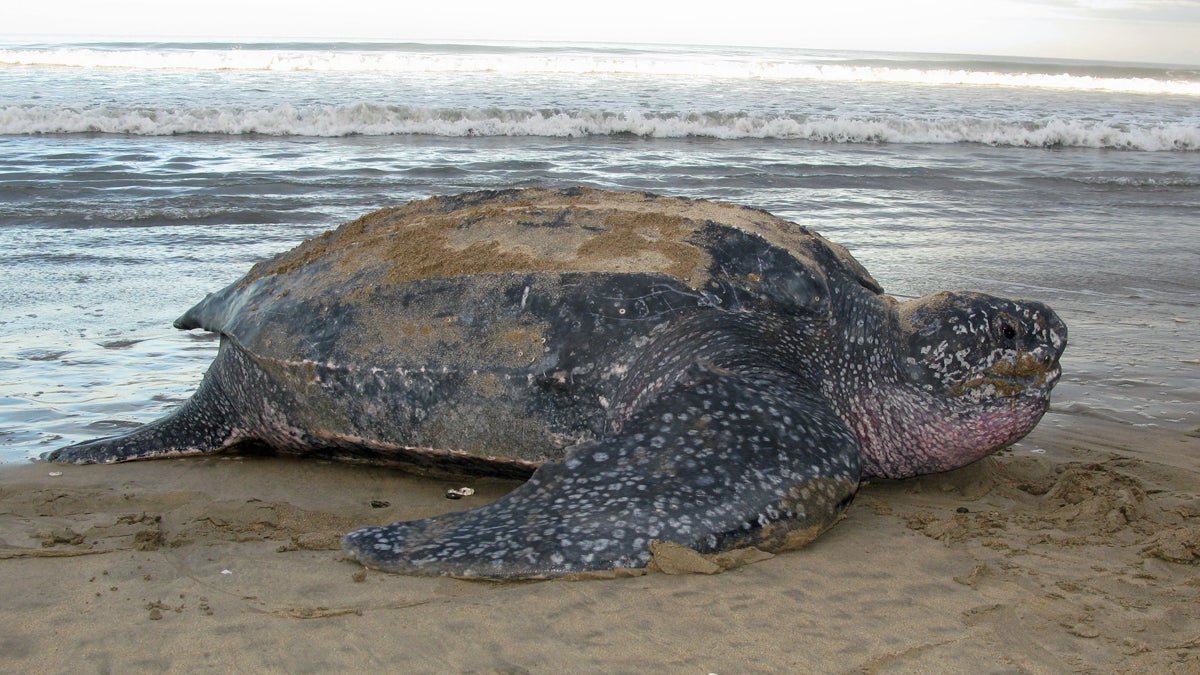Drexel prof helps effort to keep sea turtles free of life-threatening lines

Leatherback turtle (Image courtesy of George Shillinger)
With a little help — and lobbying — from conservationists, new “hot spot” maps may help sea turtles steer clear of industrial fishing lines.
The maps plot the migration patterns of leatherback turtles, then overlap the sea routes frequented by fishermen in the Pacific Ocean.
“Fisherman put 760 million hooks in the Pacific Ocean every year and a small proportion of those hooks catch turtles,” said James Spotila, professor of environmental science at Drexel University.
Spotila studies the relationship between animals and their environment. Lately, he’s had a special interest in leatherback turtles.
“They’re kind of like a canary in a mineshaft for the Pacific Ocean,” Spotila said. “If the turtles are healthy, we might guess that the ocean is healthy.”
Wildlife biologist John Roe led the map development and study published in the journal “Proceedings of the Royal Society B.”
Commercial operations in the Pacific throw down miles and miles of fishing lines each year.
“So probably what happens is [the turtles] are hauled up on board or the lines are cut and the turtles are left out there injured or, in some cases, already dead,” said Roe, assistant professor of biology at the University of North Carolina, Pembroke Campus.
Scientists had already tracked the migration; Roe, Spotila and their team added the fisheries data.
Spotila says the result is a map of the places where it’s likely that fishery lines and turtles will intersect.
“Bycatch” is a term used for the animals unintentionally swept up in a fishing operation. The researchers call their new tool “bycatch risk maps.” Areas in red show the highest risk for unintentional turtle catches.
Spotila says the “hot spot” maps may help conservationist focus their efforts and pinpoint exactly where new regulations are needed.
“There’s a big ocean, there are limited resources, what you want to do is apply your resources where they are needed the most, where the greatest threat is,” he said.
WHYY is your source for fact-based, in-depth journalism and information. As a nonprofit organization, we rely on financial support from readers like you. Please give today.

